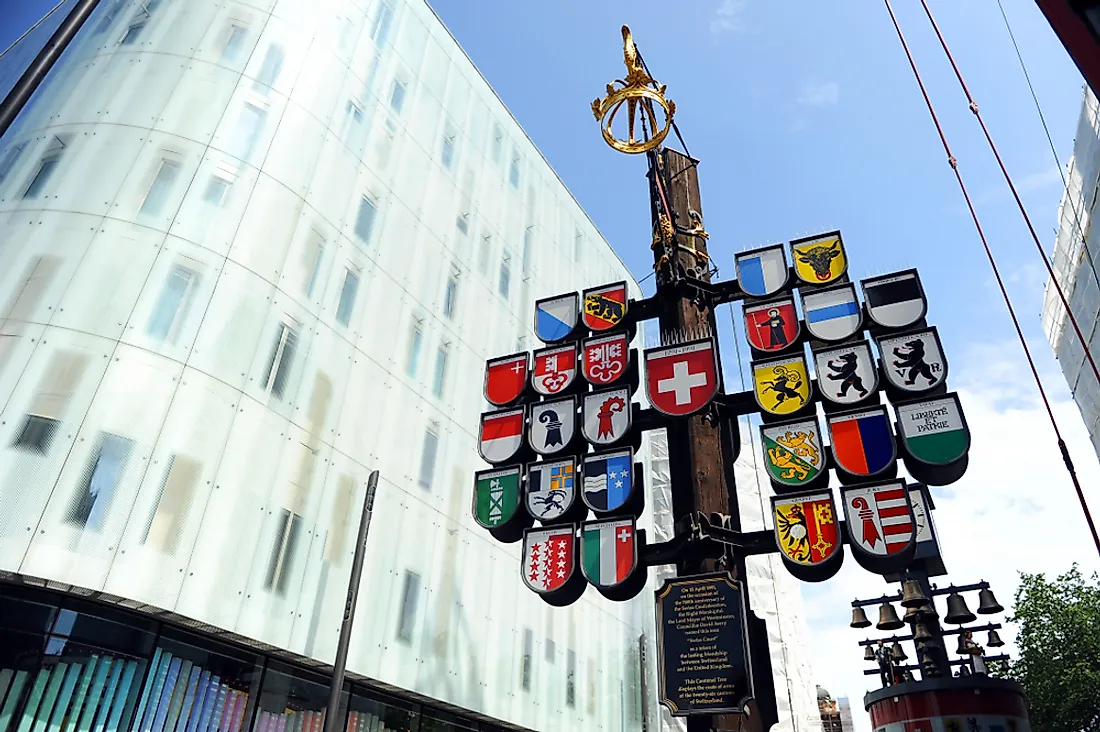The Cantons of Switzerland

The Swiss Confederation is a sovereign state in western-central Europe. It has a population of about 8.4 million and its capital city is Bern. Switzerland is made up of 26 cantons each with its own government, legislature, constitution, and judicial system. Most of the cantons have unicameral parliaments with members varying from between 58 and 200. Depending on the canton, the cantonal government can either have five or seven members. The federal constitution of Switzerland recognizes the sovereignty of the cantons. The cantonal governments are responsible for welfare, healthcare, public education, law enforcement, and taxation. Each canton has several municipalities and the cantonal constitution awards a degree of autonomy to each municipality that includes the power to pass municipal laws and levy taxes. The cantons vary in size and population.
The Cantons Of Switzerland
Zurich
The canton of Zurich is the largest with a population of 1.5 million people. It is divided into 12 districts and 165 municipalities. There are 180 members in the cantonal council who are elected after every four years. The executive consists of seven members elected to serve a term of 4 years. The city of Zurich is the capital of the canton while German is the official language. Manufacturing is the canton’s primary economic activity although a large portion of the land is under agriculture.
Bern
The canton of Bern is the second largest by population and surface area. It is located in the west-central part of the country. The canton’s population is slightly above a million, 12.45% of whom are foreigners. The city of Bern is both the canton and federal capital. There are ten district and 388 municipalities. There are 160 members in the cantonal council and seven members in the executive council. Members of both councils serve for a term of 4 years. The main source of income are tourism and agriculture.
Vaud
The canton of Vaud has a population of about 790,000. It is the third largest by population and ranks fourth by size. The canton is located in Romandy, which is the French-speaking part of Switzerland. Lausanne is the largest and capital of the canton. There are ten districts and 309 municipalities in Vaud. The cantonal council consists of 150 members while the executive council has seven members. The capital city Lausanne is the pivot of the canton’s economy, it hosts several manufacturing and processing industries. However, the canton is known for the production of white wine. The agricultural land is covered by vast vineyards especially along the shores of Lake Geneva.
History Of The Canton System
In the early thirteenth century, three cantons merged and formed a single political and economic unit but maintained their autonomy. Between 1353 and 1481, the cantons had increased to eight. Between 1513 and 1798, the number had increased to 13 to form the Thirteen-Canton Confederation. By the time they Swiss federal state was formed in 1848, the cantons had increased to 25. In 1979, the canton of Jura seceded from the canton of Bern to bring the total tally 26.
The Cantons of Switzerland
| Rank | Canton | Population |
|---|---|---|
| 1 | Zürich | 1,487,969 |
| 2 | Bern | 1,026,513 |
| 3 | Vaud | 784,822 |
| 4 | Aargau | 663,462 |
| 5 | St. Gallen | 502,552 |
| 6 | Geneva | 489,524 |
| 7 | Luzern | 403,397 |
| 8 | Ticino | 354,375 |
| 9 | Valais | 339,176 |
| 10 | Fribourg | 311,914 |
| 11 | Basel-Landschaft | 286,848 |
| 12 | Thurgau | 270,709 |
| 13 | Solothurn | 269,441 |
| 14 | Basel-Stadt | 198,249 |
| 15 | Grisons | 197,550 |
| 16 | Neuchâtel | 178,567 |
| 17 | Schwyz | 155,863 |
| 18 | Zug | 123,948 |
| 19 | Schaffhausen | 80,769 |
| 20 | Jura | 73,122 |
| 21 | Appenzell Ausserrhoden | 54,954 |
| 22 | Nidwalden | 42,556 |
| 23 | Glarus | 40,147 |
| 24 | Obwalden | 37,378 |
| 25 | Uri | 36,145 |
| 26 | Appenzell Innerrhoden | 16,003 |











